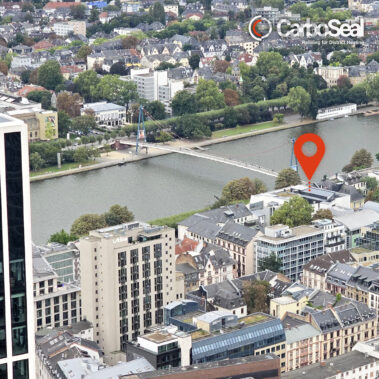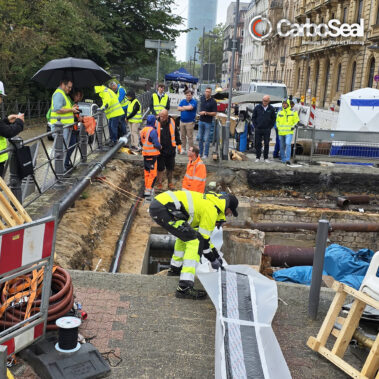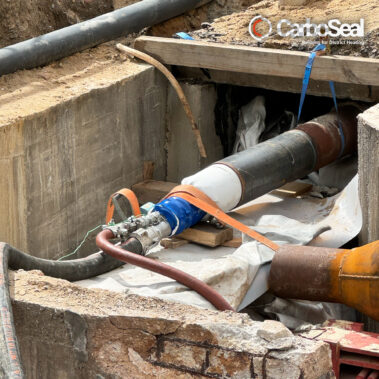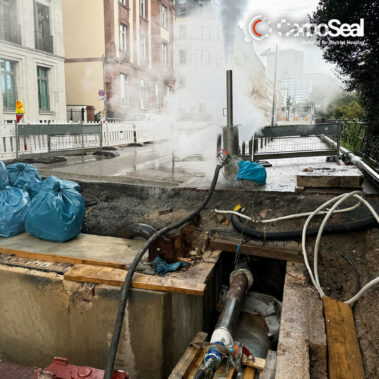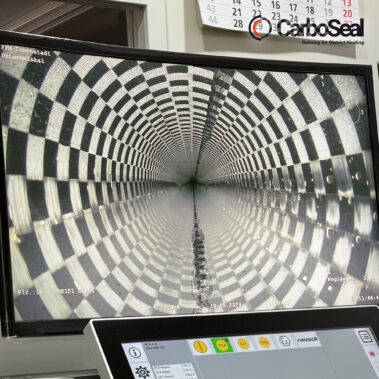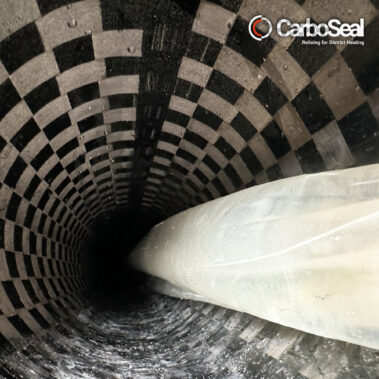The hustle and bustle of Frankfurt’s Bahnhofsviertel (railway station district) can sometimes get intense. At Untermainkai, just before the district reaches its natural boundary at the River Main, there is an unnoticed hot underground vein running through the city. This is the condensate pipe of a steam heating system operated by the network provider Mainova AG, which runs parallel to the river. This pipe has been in operation for over 40 years and was recently renovated using trenchless methods in two sections. The pilot installations of Seal®, the world’s first trenchless rehabilitation method for district heating pipes, could be pioneering and contribute to Mainova’s announced ‘Frankfurt heat transition’. PPR Deutschland GmbH and KURT Kanal- und Rohrtechnik GmbH facilitated the installation of the carbon fiber hose liners.
Mainova plans to expand the city’s district heating network by 2040. The current 310-kilometer network is expected to extend by up to 450 kilometers. However, the network operator is not only focused on building new pipelines and upgrading power plants; maintaining the integrity of existing pipelines is equally crucial. For this reason, Mainova is showing great interest in CarboSeal®. Compared to the traditional open trench construction method, the liner, manufactured in Velten near Berlin, allows for shorter construction times, rapid recommissioning, minimal space requirements, and no disruption to crossing infrastructures.
At the beginning of September, as Mainova was carrying out renovation work on expansion bends at Untermainkai, district heating pipeline operations were halted. This allowed for two pilot installations of the carbon liner in a neighboring section. Two pipe sections, each in DN 175 and approximately 101 and 190 meters long, were rehabilitated.
The first inspection after opening the two pipe sections somewhat dampened expectations. The pipes had unusually sharp edges at their weld seams, which necessitated additional milling work. The company Diringer & Scheidel, whose steam system was used for curing the liner, assisted with this milling work, which took about half a day.
Afterward, the liner installations themselves proved much less challenging. The relatively long sections were each lined from the inside and successfully refurbished in one day without any issues. A few days later, KURT and an application engineer from Amex Sanivar GmbH connected the liners to the host pipes, making them ready for recommissioning. During the rehabilitation work, Untermainkai remained open to traffic, with only minor restrictions.
